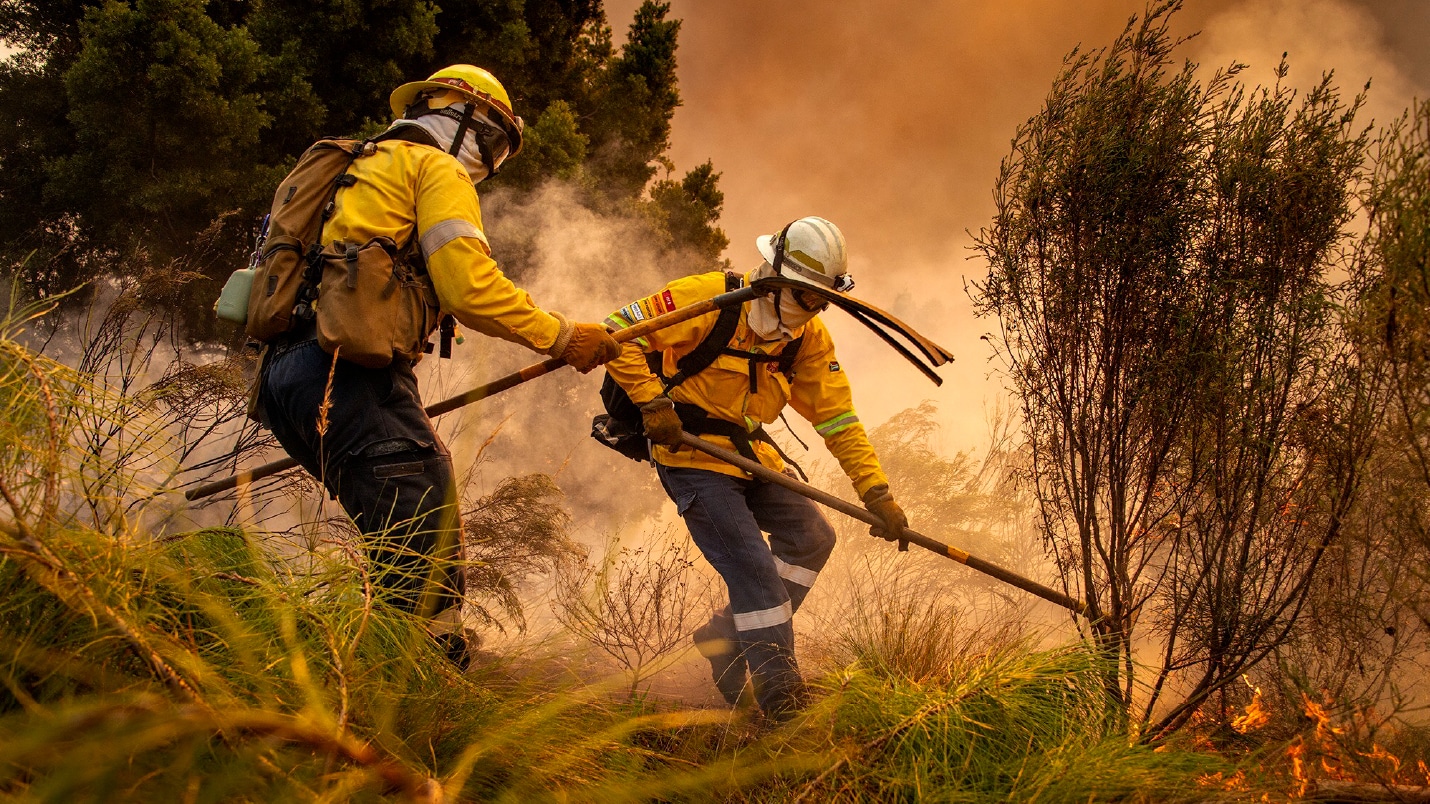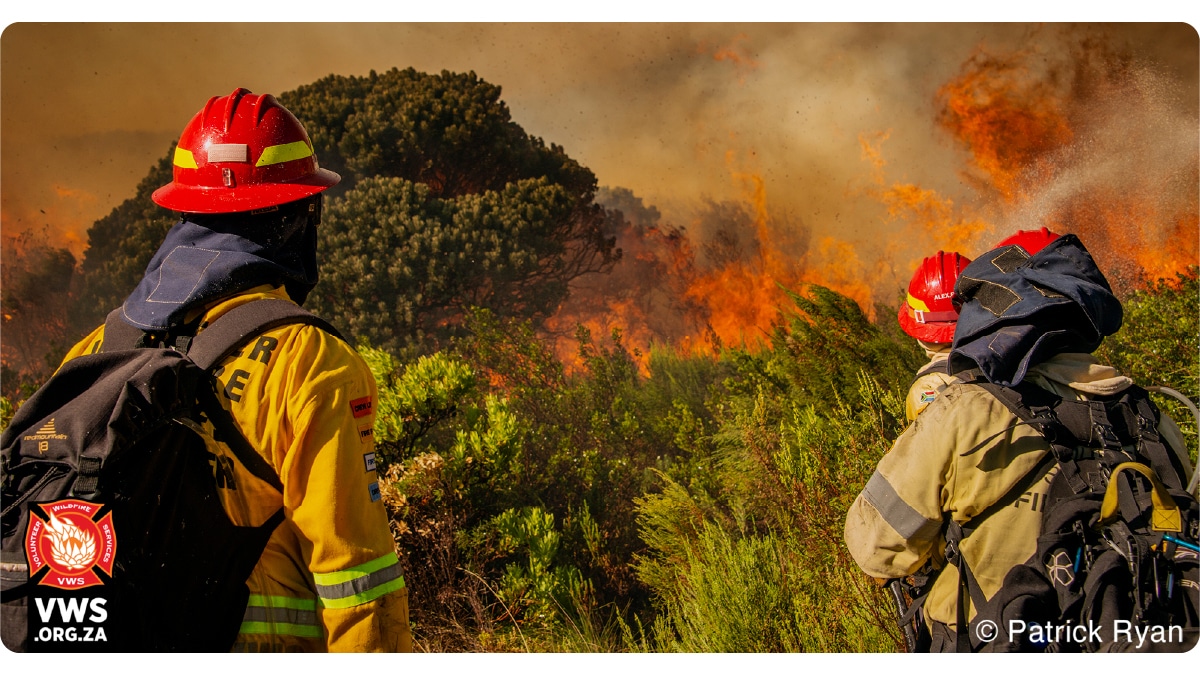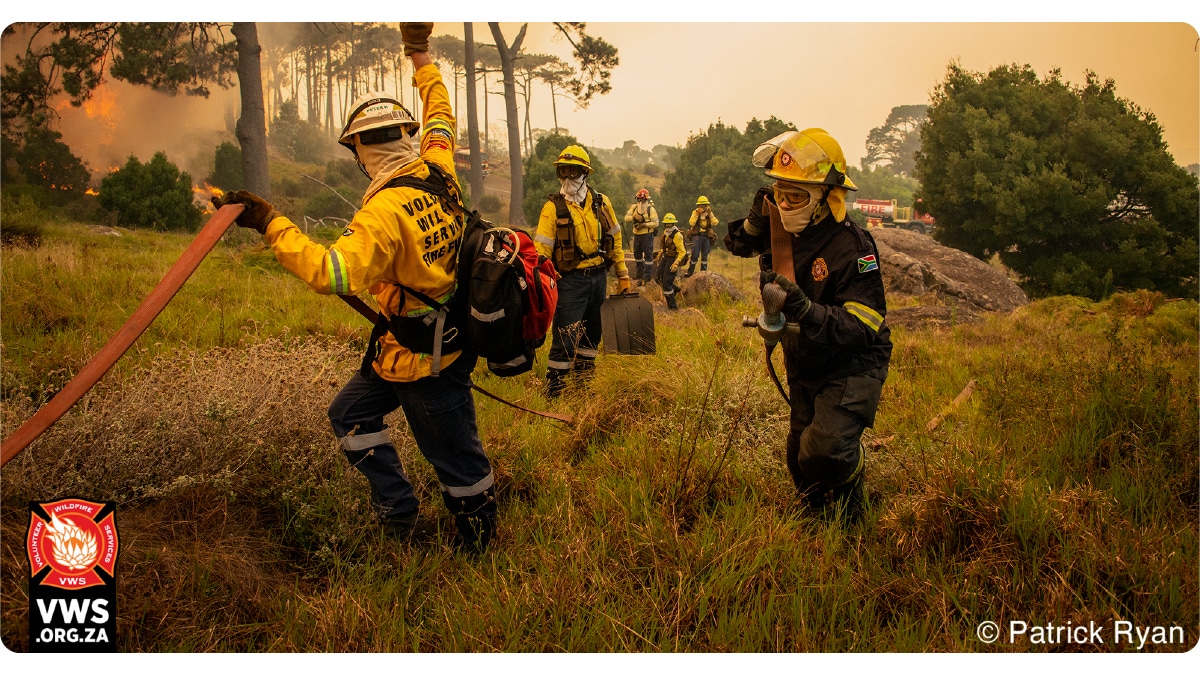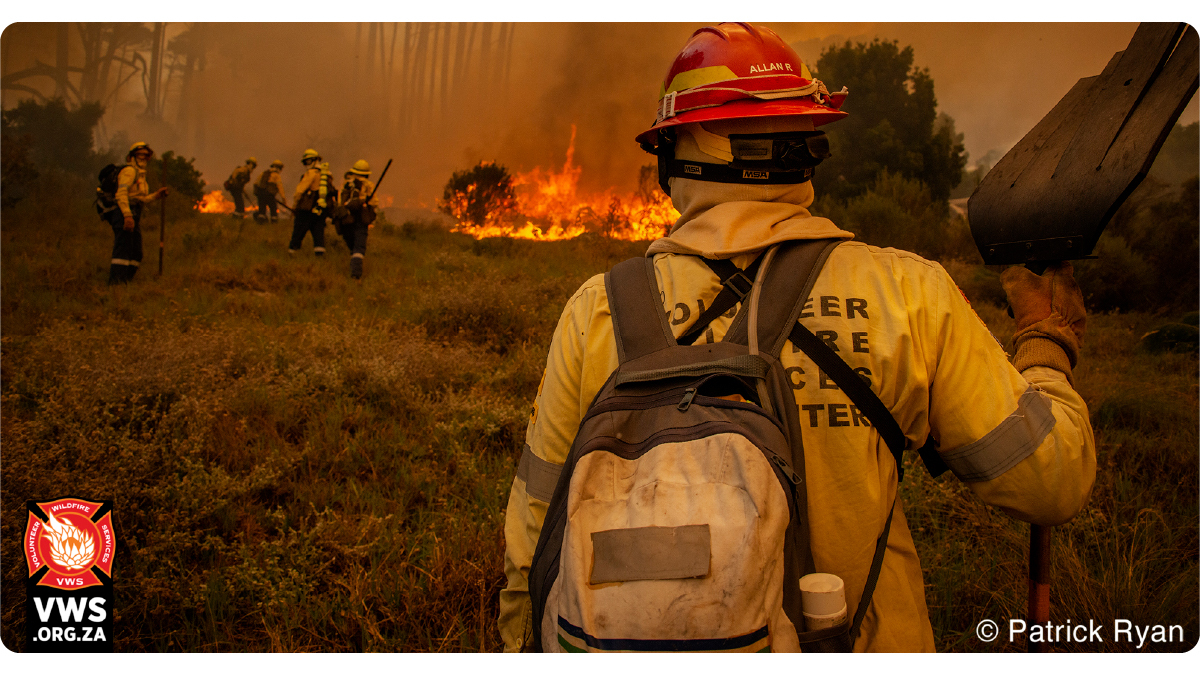Volunteer Wildfire Services: holding the line between fire and fynbos

Megan
21 May, 2021
Photography by Patrick Ryan, source: Volunteer Wildfire Services
As flames swept up the slopes of Devils Peak on Sunday, 18 April, firefighters from the Volunteer Wildfire Services joined a number of fire agencies to tackle the inferno that was raging out of control. The blaze lasted three days, during which time around 150 of the organisation’s members pitched in to stop the fire’s spread. It was the kind of fire that reminds us of the series of fires that led to the Volunteer Wildfire Services’ beginnings.
Volunteer Wildfire Services was formed during the 1999/2000 fire season. “Back then, they were called Flame Busters,” laughs Jon Meinking, Marketing Manager of the Newlands base. “A call was put out in newspapers for volunteers to help the city fight the fires that were raging at the time. A group of volunteers banded together to assist, and later formed the organisation.”
The non-profit organisation has grown considerably since then, adding three more bases to service different regions. “We’re the biggest volunteer wildfire fighting organisation in the country even though we’re only based in the Western Cape,” Jon explains. “We have bases in Newlands, the South Peninsula, Stellenbosch and the Helderberg.”

We caught up with Jon to learn more about the non-profit organisation, and the challenges it faces collecting donations.
What does your tagline ‘Holding The Line Between Fire And Fynbos’ mean?
At the Volunteer Wildfire Services, one of our mandates is to contain wildfires that may threaten sensitive Fynbos biomes (those that are particularly young or perhaps even endangered). We also try to contain fires that encroach on structures found within or near nature conservation areas that fall under our nature partners’ areas. We partner with Table Mountain National Parks and Cape Nature, so we’ll assist them when they require help. Our tagline implies that we try to hold that (fire) line away from areas of concern.
Read more: 6 incredible non-profit organisations you can support in a snap
Aside from wildland firefighting, what are the core services that the Volunteer Wildfire Services provides?
Occasionally we’ll assist Cape Winelands District municipality or Overberg District municipality in their firefighting efforts or we’ll be asked to assist other fire agencies with a prescribed burn. A prescribed burn is when an area under conservation that has not had a fire within a set number of years (Fynbos largely needs to burn every 10-15 years) or has fuel stacks (stacked old trees or big branches) that can’t be removed, and it’s more efficient to burn them than get them removed to a dump site.
We also work on spreading awareness. Education is key to preventing fires so we go to Scout groups and schools, and we also try to speak to members of the general public. During fire season someone will send us a message on social media or tweet us when they see a fire. And because we’re volunteers, we don’t man social media 24/7. So I might only see that 2 hours later, which doesn’t help. Part of our mandate around education is letting people know who to call. We try to encourage people to report it first and then go to social media. There is a national emergency number that anyone can access from their cell phone, which is 112.

What kind of training do volunteers undergo to ensure that they’re prepared?
Our training and safety standards are really high. They are inline with the top wildland firefighting units in the States and Australia. The type of training members do depends on the role they sign up for. We’re not just firefighters, we also have drivers, people in planning and control, as well as critical support.
We have a six month training season, running from May to October. During training season, our members are required to complete five sessions, which consist of hikes and practice scenarios. The hikes target their fitness, while the scenarios allow them to practice the necessary skills they need to fight fires. The scenarios become more complicated as the training season progresses. At the end of the season, all active members and new recruits are evaluated. They have to pass competency in a number of skills as well as pass the fitness assessment. The fitter you are, the more you enjoy firefighting. There’s nothing worse than getting exhausted while climbing a mountain and then having to fight a fire, which is hot, stressful, and tiring, and then hiking back out again. So we have to ensure that everyone is in good shape.
We also do a number of lectures around first aid, animals you might come across on the fire line and fire line safety. This is a general requirement for active members. New recruits also have to do a full weekend of theory before writing an exam. All of it comes down to understanding fire and how to work together as a team. It’s a lot of fun, but at the end of it, you’re pretty much prepared for whatever fire comes at us.
What is the most rewarding aspect of the work that you do?
Most people would say it’s knowing that you’ve made a difference and we do it without recognition. We don’t have our names lit up in a spotlight. Every now and again one of our members will be interviewed, but 99% of us don’t do it for glory. Our reward is knowing that we’ve done a good job, and we’ve done the best we can under the circumstances. We’ve managed to hold the line between fire and fynbos.
Sometimes we do structural protection, whether it be saving a house from a fire that’s been approaching or protecting a natural asset. Knowing that we have defended an area or protected one, is satisfying. It’s that feeling you get after you’ve managed to beat down the flames after two hours and now you’re just staring up at the stars at 2am, while everyone’s asleep, and it’s really satisfying knowing that with all this team work, you’ve managed to achieve your goal.

As a non-profit organisation that relies on donations, what are some of your biggest challenges?
Being entirely publicly funded can be difficult. Each base tries to raise funds whether it be through small quiz nights or a trail run. Newlands base’s open day in November has generally been one of our bigger fundraising events, where we get to introduce the public to who we are and what we do. We also host a trail challenge.
During fire season we get a fair bit of attention but during the rest of the year we try to maintain public and social awareness to remind people that we’re still around and that we still need to maintain our fleet. Our operating costs are quite high, let alone kitting our recruits with PPE. The hurdle that we face is just staying relevant, which we try to overcome by having a persistent social media presence and hosting small events during the year.
Read more: 10 tips to increase donations from online campaigns
How does the organisation use the money that is donated?
The money goes towards our operating costs during and after fire season. Fuel is a big one, along with the maintenance of our fleet. We put them through their paces when we go up the mountain. And then one of our biggest costs during training season is kitting out the new recruits in PPE, and it’s not the PPE that everyone has become aware of with COVID. We give them a helmet, goggles, a flash hood, which is kind of like a balaclava, gloves, a long yellow cotton shirt, blue long cotton pants, a cotton t-shirt and boots. You’re looking at around R5000 to kit out each new recruit. And that’s not including their packs or small things they might buy. So we subsidise each new recruit and if we get about 100 new recruits that qualify in a season, that’s R500 000. And there’s other running and maintenance costs that we have to try and keep up with.
How has SnapScan helped the Volunteer Wildfire Services collect donations?
We have the SnapScan QR code on our website. We put it on social media posts and we put them on flyers. A lot of people have SnapScan and the QR code makes donating easy. Having SnapScan as an option, because a lot of people use it, has really been great for us. We use the QR code at our open day and fundraising events, and now during the recent fire, people were sharing it on social media and also sharing our posts. When people go to our website it’s quick and easy to scan and make a donation.

Although recruitment for the year has already closed, you can still support the Volunteer Wildfire Services by donating to their cause using your SnapScan app.
If you’d like to share your business’ SnapScan story with us, please get in touch at stories@snapscan.co.za.
Related articles

Blood Orange: the sisterhood of the travelling dungarees
The female powerhouse with tips on how to turn your idea into reality.

Dryad Press: amplifying local voices
Providing an avenue for critical voices to be heard in South Africa is vital

Fabricate: supporting local designers
Fabricate champions locally made products, and supports designers starting out.
